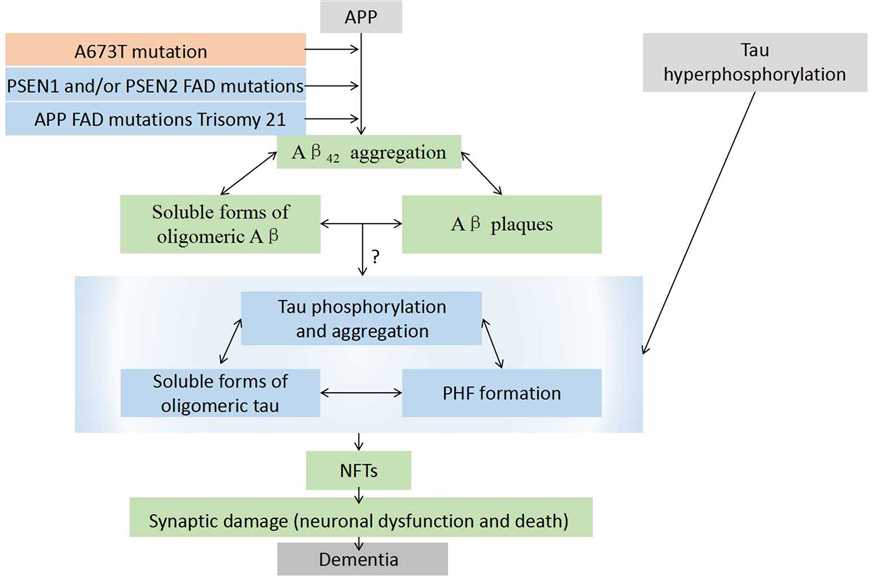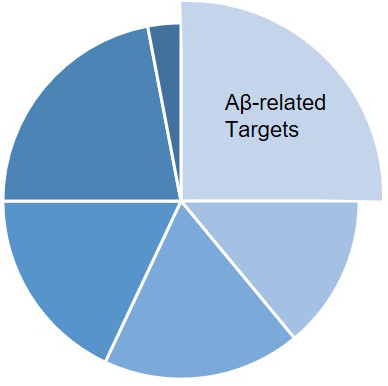The amyloid hypothesis is an important theory to explain the cause of Alzheimer’s disease (AD) currently, which is supported by the most research evidence, and the most powerful evidence is the study of patients with early-onset FAD. This hypothesis holds that the equilibrium between the production and clearance of amyloid β (Aβ) leads to the Aβ accumulation in the brain parenchyma, which triggers a series of cascades and eventually leads to the damage and death of brain neurons, the fundamental cause of the decline of memory and cognition in patients with AD.

Figure 1. The amyloid cascade hypothesis
Based on this theory, different therapies targeting Aβ have been developed. A general view is that any strategy to reduce Aβ levels in the brain by inhibiting Aβ production/aggregation or by increasing its clearance would be beneficial in preventing the development of AD. Review of the latest AD drug development pipeline shows that Aβ remains the primary therapeutic target for AD.

Figure 2. The proportion of AD agents targeting Aβ amyloid pathway in clinical trials in 2018
Strategies Targeting Aβ Amyloid Pathway
However, clinical trials have repeatedly encountered setbacks in progress, and the pathological aggregation of Aβ in the late-onset, common cases of AD, may be just one of many risk factors. Therefore, finding a truly effective target is the most important task in the development of AD therapeutics.
Alzheimacy hopes to help you come up with some novel ideas based on a more in-depth understanding of the mechanisms involved in amyloid proteins. If you are interested in this, please feel free to contact us.